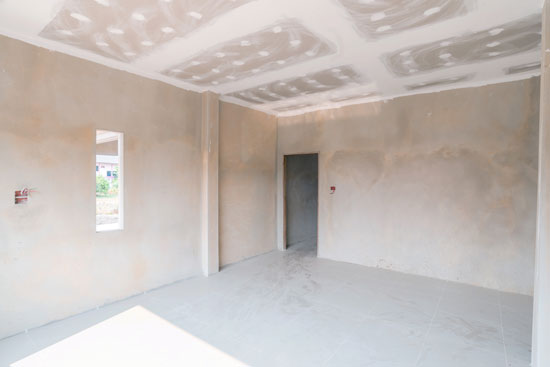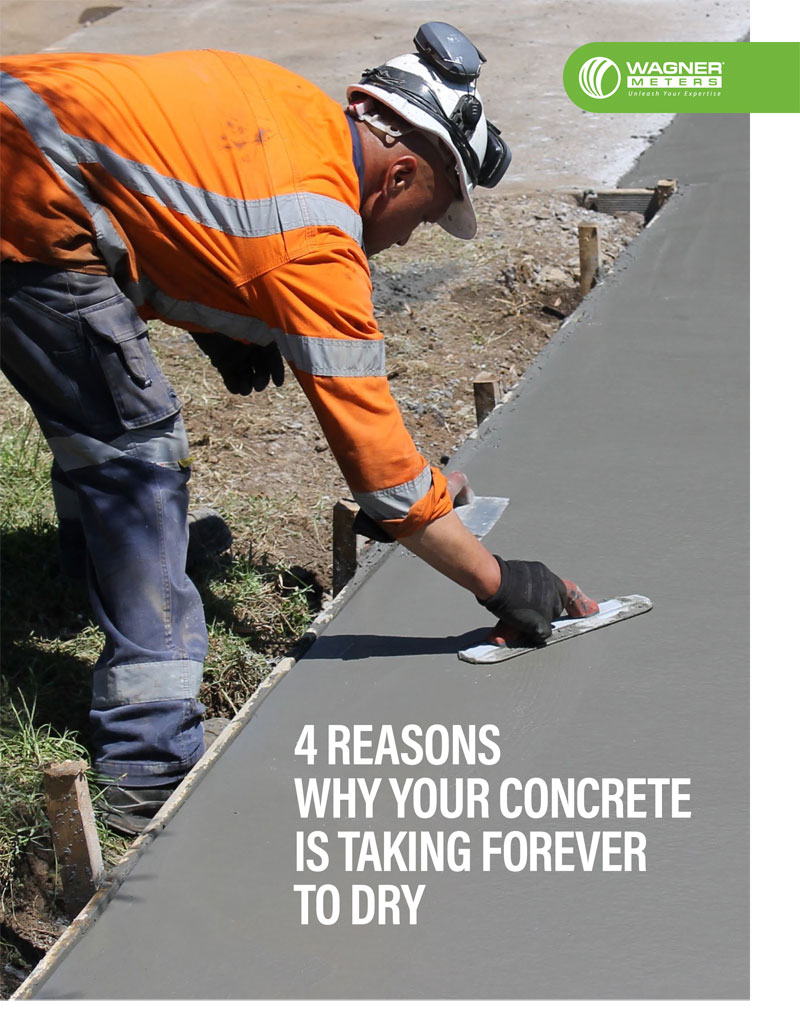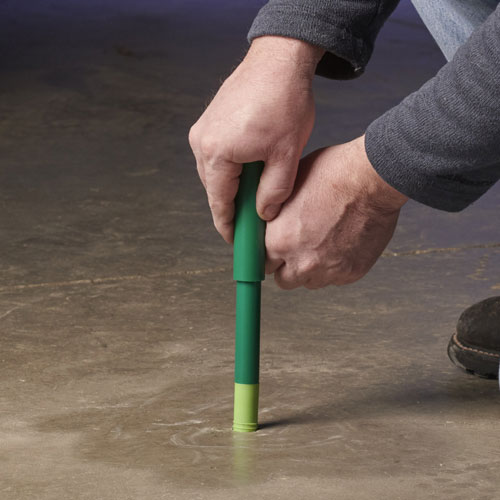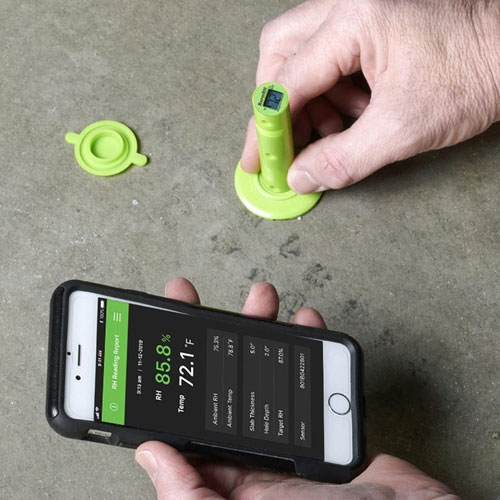How to Use Technology to More Accurately Predict Concrete Drying Times
 Concrete is an incredible construction material. It is strong, durable, resilient, and when used with a bit of creativity, can even add a decorative touch to any building or other structure. It’s also a very interesting substance because its rock-solid appearance just days after the initial pour can lead one to believe mistakenly that it must be 100 percent bone dry.
Concrete is an incredible construction material. It is strong, durable, resilient, and when used with a bit of creativity, can even add a decorative touch to any building or other structure. It’s also a very interesting substance because its rock-solid appearance just days after the initial pour can lead one to believe mistakenly that it must be 100 percent bone dry.
Despite its appearance, concrete holds considerable moisture. Indeed, water is an essential ingredient giving the concrete its strength and structural integrity. Without water, concrete would not be concrete at all. Nevertheless, after that initial pour, concrete must undergo a certain amount of drying before any floor coverings, coatings, or adhesives can be successfully installed. No flooring product can be expected to withstand constant contact with a concrete slab that holds excessive amounts of moisture.
Knowing when the concrete is dry enough for a flooring installation used to be somewhat of a tricky business. Today’s technology and moisture testing methods give the installer far greater assurance that the slab is indeed dry enough to safely install the finished floor.
The general rule of thumb is that a concrete slab needs about one month of drying time for each inch of thickness. This means that a five-inch slab typically needs about five months to dry sufficiently before the flooring installation. This is once the environmental conditions are appropriate for drying, not from the time the slab is poured. Keep in mind this is only a rule of thumb because many factors influence drying time, the most important being the initial water-to-cement ratio.
Concrete Drying vs. Curing
It’s important not to confuse concrete drying with curing or setting. The process of curing involves maintaining satisfactory levels of moisture and temperature for a definite period of time immediately following the initial pour. Curing is really a hydration process giving concrete its strength. Within three to seven days, the concrete achieves about 50% of its strength, which is why you can safely walk on a slab soon after the concrete is poured. After about 28 days, the concrete has gained significantly more strength. Curing obviously happens very quickly.
Not so for concrete drying, and plenty of factors can either lengthen or shorten the amount of time needed. The type of concrete is one such factor. Many types of concrete exist, whether standard, accelerated set, fiber reinforced, flowable, roller compacted, self-consolidated, pervious, insulated, high strength, or ultra-high strength. The primary reason that the various types of concrete will dry at different rates is that they require different water-to-cement ratios and finishes.
Other factors affecting drying time include ambient temperature and relative humidity (RH), which is affected by weather events, airflow, solar load, and whether the structure has been enclosed, the HVAC system turned on, and a vapor retarder installed.
So many variables are involved that the rule of thumb for drying time should never be relied on. In fact, all it really does is tell you that you can’t expect the drying time to be short, although by controlling some of the variables, such as temperature, RH, and airflow, you can hasten the drying process.
Predicting Concrete Drying Times
Wouldn’t it be great if—despite all the variables affecting concrete drying—you could provide a reasonably tight estimation of the drying time for the concrete slab, and not just rely on a rule of thumb that’s not so reliable? What if you could gather trend data about the moisture condition within the slab, compare the numbers to what you’ve learned from your past jobs, and give an estimation of the date the concrete will be ready for the installation of the finished floor?
Certainly, that could be expected to yield greater efficiencies, tighter project timeframes, improved ability to schedule your jobs, and perhaps even reduce labor costs and downtimes for work crews.
Compare two scenarios. In scenario 1, Joe uses the rule of thumb to estimate the concrete drying time and he schedules the floor installation for, say, July 30. As that date approaches, he performs a concrete moisture test that reveals the slab is not even close to being ready. Everyone then scrambles to adjust and put their work crews on other assignments.
Now consider scenario 2. Sam knows the rule of thumb, but he uses the scientifically proven in situ RH test to assess how the moisture condition of the slab is trending over time. As he observes moisture levels coming down, he makes a reasonable estimation that the slab’s RH should be within the floor covering manufacturer’s specifications in about two weeks. With the advance notice, work crews get scheduled with the assurance that they should be able to stick to the expected timeframe.

Free Download – 4 Reasons Why Your Concrete Is Taking Forever to Dry
Obtaining Concrete Drying Data with the Rapid RH® L6

By installing a sampling of RH sensors in the slab as soon as it is possible to do so, one can start taking readings at desired intervals and clearly document the drying process and establish moisture trends over time.
It’s because of today’s RH moisture testing technologies that scenario 2 is possible. And now, with the Rapid RH L6—an updated version of Wagner Meters’ industry-leading Rapid RH system for in situ RH testing—obtaining concrete drying data is easier than ever. This system offers an all-new L6 Smart Sensor that includes a built-in memory chip for automatically storing time-stamped data taken with every reading.

New F2170 concrete moisture testing technologies that incorporate Bluetooth® connectivity, like Wagner’s Rapid RH L6 system, make recording and reporting easier and faster.
All RH test data taken with the L6 sensor can be transferred wirelessly to one’s mobile device and easily reviewed with a free app called the DataMaster™ L6. This app can be used to provide comprehensive documentation and client reports by storing images, notes, and locations, in addition to the sensor readings.
By installing a sampling of RH sensors in the slab as soon as it is possible to do so, one can start taking readings at desired intervals and clearly document the drying process and establish moisture trends over time.
It is recommended that one also include data related to the various factors that we know affect drying times: concrete type, thickness, vapor barrier, ambient temperature/RH, aggregate type, any desiccation agents present, exposure to sunlight, above grade/below grade, etc.
Position Yourself with Knowledge
Eventually, by gathering moisture-related data and documenting what happens with each project, the flooring professional can position himself as a knowledgeable reference about drying times based on different concrete types and various drying scenarios.
With greater confidence about what to expect and when to schedule things, flooring professionals with knowledge about concrete drying may find that general contractors specifically seek them out. After all, what contractor doesn’t want more predictability when planning each of his projects?
Jason has 20+ years’ experience in sales and sales management in a spectrum of industries and has successfully launched a variety of products to the market, including the original Rapid RH® concrete moisture tests. He currently works with Wagner Meters as our Rapid RH® product sales manager.
Related Posts via Taxonomies
Last updated on June 1st, 2021



